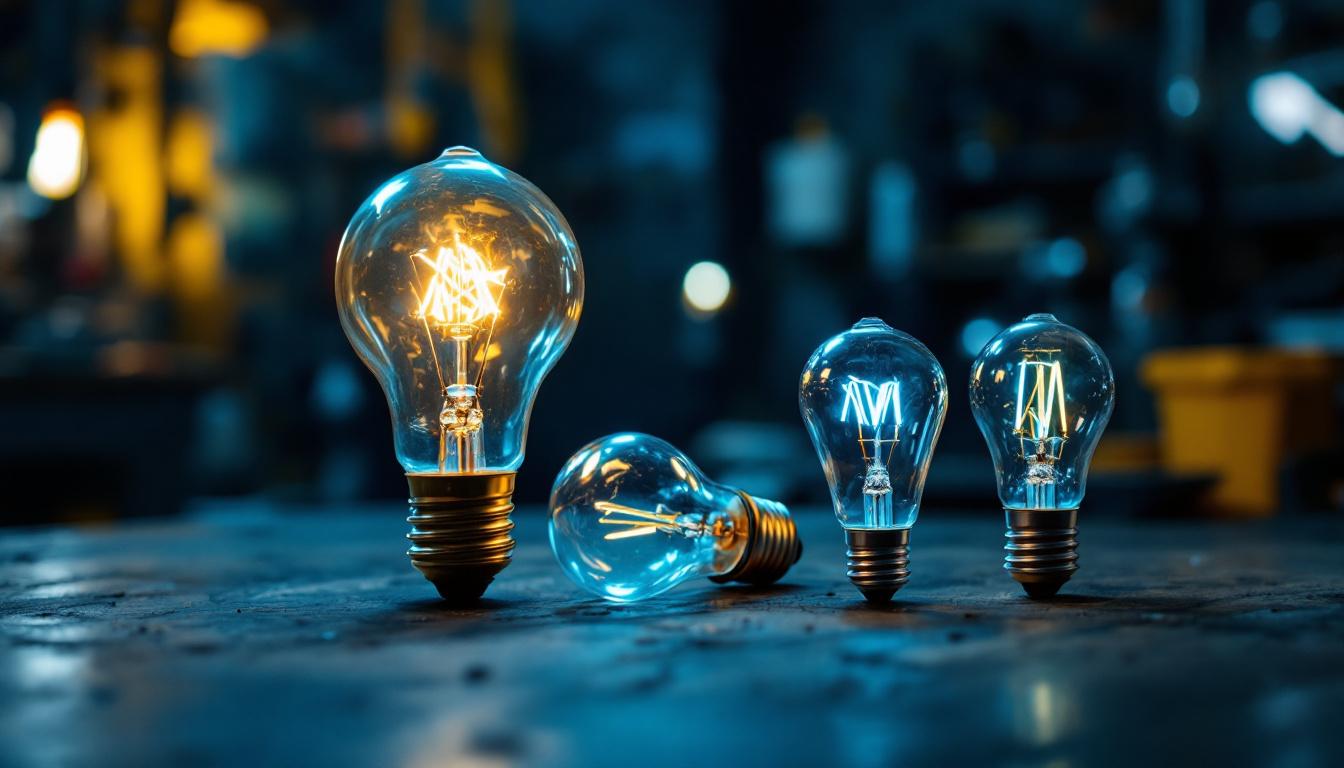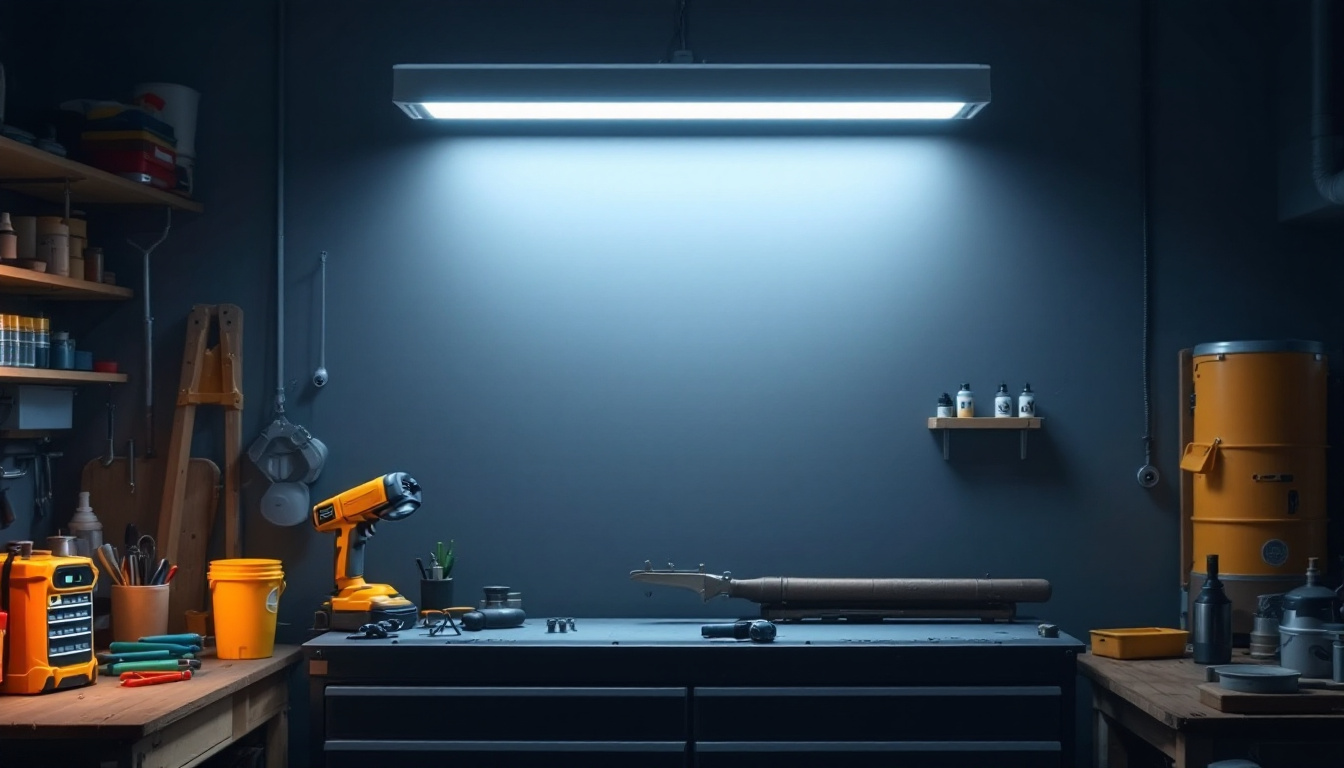
As the demand for energy-efficient lighting solutions continues to rise, the role of tracks LED lighting in modern design has become increasingly significant. Lighting contractors must stay informed about the latest advancements in track lighting technology, installation techniques, and design options. This article will delve into essential aspects of tracks LED lighting, providing valuable insights that can enhance the services offered by lighting professionals.
Track lighting is a versatile and dynamic solution that allows for flexible illumination in various spaces, from residential to commercial settings. It consists of a track, which is mounted to the ceiling or wall, and multiple light fixtures that can be adjusted along the track to direct light where it is needed most. This adaptability makes track lighting an ideal choice for highlighting art, illuminating workspaces, or creating ambient lighting in living areas.
Track lighting systems are made up of several key components, including the track itself, the fixtures, and the electrical connections. The track typically comes in different lengths and can be straight or curved, allowing for creative installations. Fixtures can vary widely in design, from minimalist styles to more decorative options, accommodating different aesthetic preferences. Additionally, many modern fixtures offer features such as adjustable heads and dimming capabilities, providing further customization for the user.
Electrical connections are crucial for ensuring that the fixtures receive power. Most track lighting systems utilize a low-voltage transformer or a standard line voltage, depending on the type of fixtures being used. Understanding these components is essential for lighting contractors to provide effective solutions tailored to their clients’ needs. Proper installation and configuration of these electrical connections can enhance safety and efficiency, reducing the risk of overheating and ensuring a longer lifespan for the fixtures.
There are three primary types of track lighting systems: H, J, and L tracks. Each type has its unique design and compatibility with specific fixtures. H-track systems are the most common and are known for their versatility, allowing for a wide range of fixtures to be used. J-tracks are often used in commercial settings, while L-tracks are less common but can offer unique design opportunities. Understanding the differences between these systems is essential for selecting the right track lighting for a specific application.
When selecting a track lighting system, contractors should consider the specific requirements of the project, including the type of fixtures needed, the layout of the space, and the desired aesthetic. This understanding will help ensure that clients receive a lighting solution that meets their expectations. Furthermore, factors such as the color temperature of the bulbs and the beam angle can significantly influence the overall ambiance of the space. For instance, warmer light temperatures can create a cozy atmosphere, while cooler temperatures can enhance focus and productivity, making these considerations essential in the selection process.
LED technology has revolutionized the lighting industry, offering numerous advantages over traditional incandescent and fluorescent options. For lighting contractors, understanding these benefits is essential for recommending the best solutions to clients.
One of the most significant advantages of LED track lighting is its energy efficiency. LED bulbs consume significantly less power than traditional lighting options, which can lead to substantial savings on energy bills. This efficiency not only benefits the environment but also appeals to clients looking to reduce operational costs.
Moreover, LED lights have a longer lifespan, often lasting up to 25 times longer than incandescent bulbs. This longevity means less frequent replacements, reducing maintenance costs and providing added convenience for clients. The reduced need for replacements also translates to less waste in landfills, making LEDs a more sustainable choice in the long run.
LED track lighting offers unparalleled versatility, making it suitable for various applications. Whether illuminating artwork in a gallery, providing task lighting in a kitchen, or creating ambient lighting in a retail space, LED track lights can adapt to meet diverse needs.
Additionally, the design flexibility of LED fixtures allows for creative installations that enhance the overall aesthetic of a space. With a wide array of styles, colors, and finishes available, contractors can customize lighting solutions that align with their clients’ visions. Furthermore, the ability to adjust the direction of LED track lights enables users to highlight specific areas or objects, adding depth and dimension to any environment. This adaptability makes LED track lighting not just a functional choice, but a stylish one that can elevate the overall design of both residential and commercial spaces.
Another notable advantage of LED track lighting is its compatibility with smart home technology. Many LED systems can be integrated with smart controls, allowing users to adjust brightness, color temperature, and even create lighting schedules through a smartphone app or voice commands. This level of control not only enhances user experience but also provides an opportunity for contractors to offer cutting-edge solutions that meet the growing demand for smart home features. By incorporating these advanced technologies, contractors can further demonstrate their expertise and commitment to providing innovative lighting solutions that cater to modern lifestyles.
Proper installation of track LED lighting is crucial for ensuring optimal performance and safety. Lighting contractors should adhere to best practices to guarantee a successful installation process.
Before installation, it is essential to plan the layout carefully. This involves assessing the space, determining the desired lighting effect, and deciding on the placement of the track and fixtures. Contractors should consider factors such as ceiling height, room dimensions, and the purpose of the lighting to create an effective design.
Using a mock-up or lighting simulation software can help visualize the final result, allowing for adjustments before installation begins. This planning stage is vital for achieving the best lighting outcome and satisfying client expectations. Furthermore, it is beneficial to involve clients in this process, as their input can provide valuable insights into their preferences and how they intend to use the space. By collaborating closely with clients, contractors can ensure that the lighting not only meets functional needs but also complements the overall aesthetic of the environment.
When installing track lighting, electrical considerations are paramount. Contractors must ensure that the electrical supply is adequate for the number of fixtures being installed and that all connections comply with local building codes. Proper grounding and circuit protection are also essential for safety.
Additionally, it is advisable to use compatible dimmers and controls to enhance the versatility of the lighting system. This allows clients to adjust the brightness and create different atmospheres depending on their needs. Moreover, contractors should also consider the energy efficiency of the installed fixtures. Utilizing LED lights not only reduces energy consumption but also extends the lifespan of the lighting system, resulting in lower maintenance costs over time. By educating clients about the benefits of energy-efficient options, contractors can promote sustainable practices while also meeting modern lighting demands.
Even with the long lifespan of LED fixtures, maintenance is still a necessary aspect of track lighting systems. Lighting contractors should educate clients on proper care and troubleshooting techniques to ensure the longevity and performance of their lighting solutions.
Dust and debris can accumulate on light fixtures, diminishing their brightness and overall effectiveness. Regular cleaning is essential to maintain optimal performance. Contractors can recommend specific cleaning methods and products that are safe for the materials used in the fixtures.
In addition to cleaning the fixtures, contractors should advise clients to check the track for any signs of wear or damage. Ensuring that the track is free of obstructions will help maintain the functionality of the lighting system.
Despite the reliability of LED technology, issues may occasionally arise. Common problems include flickering lights, dimming, or complete fixture failure. Educating clients on how to troubleshoot these issues can save time and frustration.
For flickering lights, contractors should check the connections and ensure that the fixtures are securely attached to the track. If a fixture fails, replacing the bulb is often a simple solution, but it is essential to ensure that the replacement bulb is compatible with the existing system.
The lighting industry is continually evolving, with new technologies and trends emerging regularly. Staying informed about these developments is crucial for lighting contractors looking to remain competitive in the market.
One of the most significant trends in lighting is the rise of smart technology. Smart track lighting systems allow users to control their lighting through mobile apps or voice-activated devices, providing convenience and customization. Contractors should familiarize themselves with these technologies to offer clients innovative solutions that enhance their lighting experience.
Integrating smart lighting into track systems can also improve energy efficiency. Features such as motion sensors and timers can help reduce energy consumption, appealing to environmentally conscious clients.
As design trends shift towards minimalism and sustainability, the aesthetic appeal of track lighting is becoming increasingly important. Lighting contractors should stay updated on design trends and be prepared to offer stylish options that align with contemporary tastes.
From sleek, modern fixtures to more decorative designs, the variety available in track LED lighting allows contractors to cater to a wide range of client preferences. Understanding these trends can help contractors make informed recommendations that resonate with their clients.
Track LED lighting represents a significant opportunity for lighting contractors to provide innovative, energy-efficient solutions to their clients. By understanding the components, advantages, installation best practices, and future trends of track lighting, contractors can enhance their expertise and offer valuable services.
As the industry continues to evolve, staying informed and adaptable will be key to success. With the right knowledge and skills, lighting contractors can not only meet but exceed their clients’ expectations, solidifying their reputation as trusted professionals in the field.
Ready to take your lighting projects to the next level? Look no further than LumenWholesale for an unbeatable selection of spec-grade track LED lighting products. Our commitment to quality and affordability ensures that you can equip your projects with the best lighting solutions without breaking the bank. Say goodbye to middleman markups and hello to hassle-free bulk buying with free shipping. Elevate your lighting game and discover the best value in wholesale lighting today with LumenWholesale.

Discover how to future-proof your lighting projects by upgrading to LED and removing dimmers.

Explore the fascinating journey of the light bulb’s invention, tailored specifically for lighting contractors.

Discover how 4-foot LED shop lights can revolutionize your workspace with energy efficiency and longevity.

Discover essential strategies and expert tips for lighting contractors in “Shandelir: Crucial Insights for Lighting Contractors.” Enhance your projects with innovative solutions, industry trends, and practical advice to illuminate your path to success..